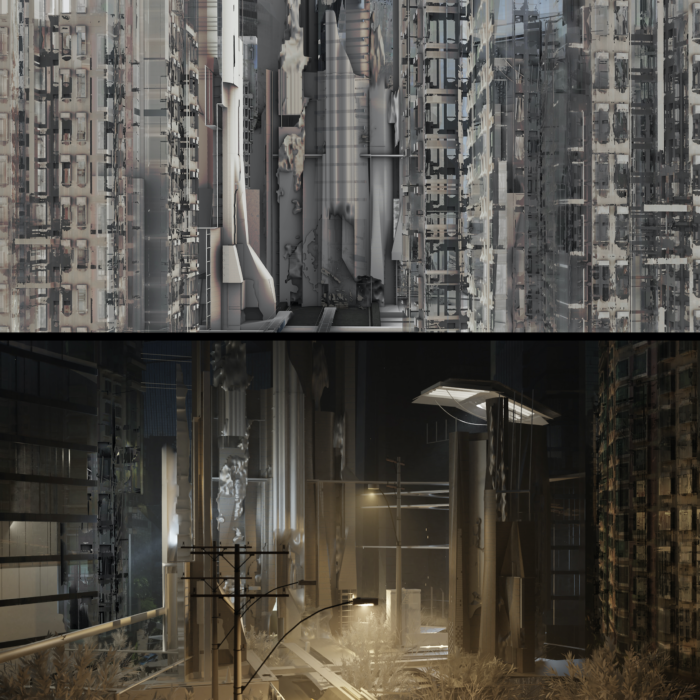LING FUNG (GRACE) CHAN 2020-21 YEAR 3 Bedding In At the Edge of Origin: A New Museum for Shekou First Class Honours A study in stone seven ways, this City Museum tells the story of Shekou, Shenzhen, through the life-cycle of its bedrock: granite. The […]
2020-21: At Truth’s Edge: When Architecture Confronts Conspiracy
Tutors: Farlie Reynolds and Greg Storrar
“Everything was possible and … nothing was true”
– Hannah Arendt
“Any sufficiently advanced technology is indistinguishable from magic.”
– Arthur C. Clarke
1941, A Tale of Two Airfields
On the muddy banks of the River Thames estuary sits an aeroplane woven from straw. Engineless, it idles inanimately beside an unmanned air traffic control tower constructed entirely from cardboard. The stuff of secrets. At the same moment, on an island in the South Pacific some 8,000 miles away, sits another plane fashioned from twigs and twine. A timber pole impersonating a radio mast stands totemic nearby, but it carries no transistor, no receiver dish, no broadcast. Just a carefully carved pumpkin.
These planes are plots, props, and honey pots. The London airfield is a decoy staged to draw German bombers away from London during the Blitz. The South Pacific airfield is an attempt by a local tribe to lure World War Two supply planes into mistakenly landing on their remote island. The false promise of a new age of paradisal plenty encourages this ‘Cargo Cult’ into a fanatical worship of the plane; a peculiar belief system shaped by the sudden exposure to new technology. Steeped in misdirection and misunderstanding, these carefully crafted and eerily similar stagings make for good conspiracies. But unlike the moon landing ‘hoax’ or the myriad of JFK assassination theories, this tale of two airfields turns out to be true.
2020, The Paranoid Normal
Today, paranoia ignites the mistrust of our post-truth era, fuelled by the revelation of genuine cover-ups.The tobacco industry really did hide evidence of the cancerous effects of smoking, the CIA did dose unwitting Americans with LSD in a bid to master mind control, and the government really was (and is) watching you. Truth is undermined through endless repetition, via the megaphone of social media broadcasting unhinged claims laminated in the thinnest patina of evidence and verified only by algorithm-multiplied thumbs up. Such crowd-sourced conspiracy can become dangerous when the burden of explanation is readily dispensed with at will; take the anti-vaccine movement, climate change denial, or the widespread belief that 5G masts caused the coronavirus pandemic. We approach a new Paranoid Normal, and our lives are at risk.
This year we will investigate the agency of architecture in today’s culture of misinformation, asking what roles do – and might –architects play in the defence of fundamental truths. We will re-orient ourselves in ambiguous states, exploring conspiratorial narratives and critical doubt. We will dare to meddle in the murky world of paranoia and conspiracy, addressing the critical need for new architectures that confront the Post-Truth.
As technology marches forwards, gaps emerge in our understanding of the world. When presented with information we cannot fully comprehend, it is human nature to attempt to plug these gaps with assumptions of our own making. The penning of these ad-libs is not always the product of benevolent forces however, and for conspiracy theorists, the often scarcely believable wonders of technological progress present opportunities to promote alternative truths.
In Project One we will unravel the social, spatial, and architectural mechanisms behind the false narratives of conspiracy theories, developing tools to disarm conspiratorial plots. We will employ investigative systems and forensic techniques to learn the ways of the Conspirator, in order to demystify the magic in the mundane, and distinguish Conspiracy from Conspiracy Theory.
Guided by personal agenda, geographic proximity, or simply an intuitive curiosity, we will each select a conspiratorial narrative for interrogation. In precise acts of counter-forensics, we will study manipulated mythology through the lens of new technology, searching for evidence of anomalies, glitches, inconsistencies, absurdities, and revelation. We will see beyond the binaries of fact versus fiction. Equipped with the know-how required to then precisely reconstruct the scene, we will replay the event in and out of real time and space until truths reveal themselves.
To generate counter evidence, each staging will require an exquisitely constructed prop, tailored to the plot and site under investigation. This might be a series of analytical drawings, a digital simulation, a model, an augmenting wearable, or an apparatus deployed on the site itself. Captured through photography and film, our findings will be broadcast and factchecked, wary of the obfuscations inherent in today’s modes of architectural representation.
Before staging our reconstructed conspiracies, which will be the focus of term one, we will begin the year with a week-long group project to break the ice. This first foray into conspiracism will yield a collective output and provide the platform for us to get to know one another.
We will learn from the creative stagings and precision props of others: Jeff Wall’s photographic (re)constructions, NASA’s neutral buoyancy simulation labs, Marguerite Humeau’s pseudoscientific installations (fig.1), Miriam Bäckström’s parallel-reality stage sets, Thomas Demand’s political facsimiles, and Forensic Architecture’s evidentiary systems that reconstruct physical and virtual worlds to fight socio-political injustice. We too will treat our forensic (re)staging as a critical tool rather than simply an architectural end-product; a model for questioning and (dis) organising ideas. Conventions like the architectural drawing will be our enablers rather than our outputs. We will embrace first principles, see-saw between intuition and precision, (mis)use digital technologies to advance physical learning, and prototype over and over again.
Building Truths
In Project Two, we will apply and refine the explorative practices established in the first term. We will develop designs for cultural buildings dealing with complex spatial, structural, and climatic conditions, asking how architecture might be reimagined, or refigured, when it becomes the refuge from (or target of) mistrust.
We will study Noémie Goudal’s biodegradable photographic performances of glacial melt (fig.2), made for climate change deniers, and David Adjaye’s Mass Extinction Observatory, a bell tower that tolls each time our actions on the planet cause another species to be lost. These works will teach us how to design programmes of resistance against propagating fictions, such as museums, theatres, town halls, courthouses, monuments, and research institutes.
Building on the success of last year, we will continue our collaboration with Flimwell Park, a woodland workshop and creative laboratory in the High Weald of East Sussex. The area, famous for its folklore and mythology, will be the site for the building project and a fertile testing ground for our ideas. Here, we will establish a close dialogue with the local community of foresters, ecologists, historians, makers, and architects. If Covid developments restrict access, we will call on resources already at our disposal to help us better understand a place we may not initially visit: LiDAR scans, cartographic site data, and a unique collaboration with last year’s Y3 cohort, who know the woodland like the back of their hand.
Unit 8 fosters a shared learning environment across Y2 and Y3, but each year is tailored. Y2 teaching will focus on the tools and techniques to realise the design of carefully crafted, modestlyscaled buildings. Y3 will be supported in the development of individual working practices that thread together the building project, design technology, and thesis, into an intellectually ambitious architectural output.
Working Methods
Interested in material, structural, and spatial experimentation at a range of scales, Unit 8 champions innovative architectural strategies that boldly address the environmental challenges of our time. Welcoming the brave and the curious, we nurture a prototypical testing-led methodology in a safe space in which you are not expected to play safe.
Our experimental agenda will continue this year in spite of (and embracing) the disruptive circumstances we find ourselves in. The unit’s well-established practice of prototyping and handson thinking will be maintained through close collaboration with our experienced technical and digital tutors, Steve Johnson and Tom Budd. Together we will explore the potential of new technologies and age-old crafts. As per the unit’s strong tradition, this enables the production of novel technical dissertations and sophisticated buildings, that are as precise as they are provocative.
We support curious students with a strong will to discover new approaches to building design. We focus on developing the tools and skills required to generate, communicate and construct architecture in practice. To achieve this, we run workshops in visual communication, portfolio curation, fabrication detailing, digital drafting, rendering, photography, film-making, and animation. Communicated clearly and seductively, our work equips us for both the student portfolio and for practice beyond the walls of the school. These working methods will enable us to move fluidly between the analogue and digital, the technical and the psychological, the remote and the real, to develop a well-judged selective sharpness in these blurry times.
All posts filed under “2020-21”
2020-21: At Truth’s Edge: When Architecture Confronts Conspiracy
Tutors: Farlie Reynolds and Greg Storrar
“Everything was possible and … nothing was true”
– Hannah Arendt
“Any sufficiently advanced technology is indistinguishable from magic.”
– Arthur C. Clarke
1941, A Tale of Two Airfields
On the muddy banks of the River Thames estuary sits an aeroplane woven from straw. Engineless, it idles inanimately beside an unmanned air traffic control tower constructed entirely from cardboard. The stuff of secrets. At the same moment, on an island in the South Pacific some 8,000 miles away, sits another plane fashioned from twigs and twine. A timber pole impersonating a radio mast stands totemic nearby, but it carries no transistor, no receiver dish, no broadcast. Just a carefully carved pumpkin.
These planes are plots, props, and honey pots. The London airfield is a decoy staged to draw German bombers away from London during the Blitz. The South Pacific airfield is an attempt by a local tribe to lure World War Two supply planes into mistakenly landing on their remote island. The false promise of a new age of paradisal plenty encourages this ‘Cargo Cult’ into a fanatical worship of the plane; a peculiar belief system shaped by the sudden exposure to new technology. Steeped in misdirection and misunderstanding, these carefully crafted and eerily similar stagings make for good conspiracies. But unlike the moon landing ‘hoax’ or the myriad of JFK assassination theories, this tale of two airfields turns out to be true.
2020, The Paranoid Normal
Today, paranoia ignites the mistrust of our post-truth era, fuelled by the revelation of genuine cover-ups.The tobacco industry really did hide evidence of the cancerous effects of smoking, the CIA did dose unwitting Americans with LSD in a bid to master mind control, and the government really was (and is) watching you. Truth is undermined through endless repetition, via the megaphone of social media broadcasting unhinged claims laminated in the thinnest patina of evidence and verified only by algorithm-multiplied thumbs up. Such crowd-sourced conspiracy can become dangerous when the burden of explanation is readily dispensed with at will; take the anti-vaccine movement, climate change denial, or the widespread belief that 5G masts caused the coronavirus pandemic. We approach a new Paranoid Normal, and our lives are at risk.
This year we will investigate the agency of architecture in today’s culture of misinformation, asking what roles do – and might –architects play in the defence of fundamental truths. We will re-orient ourselves in ambiguous states, exploring conspiratorial narratives and critical doubt. We will dare to meddle in the murky world of paranoia and conspiracy, addressing the critical need for new architectures that confront the Post-Truth.
As technology marches forwards, gaps emerge in our understanding of the world. When presented with information we cannot fully comprehend, it is human nature to attempt to plug these gaps with assumptions of our own making. The penning of these ad-libs is not always the product of benevolent forces however, and for conspiracy theorists, the often scarcely believable wonders of technological progress present opportunities to promote alternative truths.
In Project One we will unravel the social, spatial, and architectural mechanisms behind the false narratives of conspiracy theories, developing tools to disarm conspiratorial plots. We will employ investigative systems and forensic techniques to learn the ways of the Conspirator, in order to demystify the magic in the mundane, and distinguish Conspiracy from Conspiracy Theory.
Guided by personal agenda, geographic proximity, or simply an intuitive curiosity, we will each select a conspiratorial narrative for interrogation. In precise acts of counter-forensics, we will study manipulated mythology through the lens of new technology, searching for evidence of anomalies, glitches, inconsistencies, absurdities, and revelation. We will see beyond the binaries of fact versus fiction. Equipped with the know-how required to then precisely reconstruct the scene, we will replay the event in and out of real time and space until truths reveal themselves.
To generate counter evidence, each staging will require an exquisitely constructed prop, tailored to the plot and site under investigation. This might be a series of analytical drawings, a digital simulation, a model, an augmenting wearable, or an apparatus deployed on the site itself. Captured through photography and film, our findings will be broadcast and factchecked, wary of the obfuscations inherent in today’s modes of architectural representation.
Before staging our reconstructed conspiracies, which will be the focus of term one, we will begin the year with a week-long group project to break the ice. This first foray into conspiracism will yield a collective output and provide the platform for us to get to know one another.
We will learn from the creative stagings and precision props of others: Jeff Wall’s photographic (re)constructions, NASA’s neutral buoyancy simulation labs, Marguerite Humeau’s pseudoscientific installations (fig.1), Miriam Bäckström’s parallel-reality stage sets, Thomas Demand’s political facsimiles, and Forensic Architecture’s evidentiary systems that reconstruct physical and virtual worlds to fight socio-political injustice. We too will treat our forensic (re)staging as a critical tool rather than simply an architectural end-product; a model for questioning and (dis) organising ideas. Conventions like the architectural drawing will be our enablers rather than our outputs. We will embrace first principles, see-saw between intuition and precision, (mis)use digital technologies to advance physical learning, and prototype over and over again.
Building Truths
In Project Two, we will apply and refine the explorative practices established in the first term. We will develop designs for cultural buildings dealing with complex spatial, structural, and climatic conditions, asking how architecture might be reimagined, or refigured, when it becomes the refuge from (or target of) mistrust.
We will study Noémie Goudal’s biodegradable photographic performances of glacial melt (fig.2), made for climate change deniers, and David Adjaye’s Mass Extinction Observatory, a bell tower that tolls each time our actions on the planet cause another species to be lost. These works will teach us how to design programmes of resistance against propagating fictions, such as museums, theatres, town halls, courthouses, monuments, and research institutes.
Building on the success of last year, we will continue our collaboration with Flimwell Park, a woodland workshop and creative laboratory in the High Weald of East Sussex. The area, famous for its folklore and mythology, will be the site for the building project and a fertile testing ground for our ideas. Here, we will establish a close dialogue with the local community of foresters, ecologists, historians, makers, and architects. If Covid developments restrict access, we will call on resources already at our disposal to help us better understand a place we may not initially visit: LiDAR scans, cartographic site data, and a unique collaboration with last year’s Y3 cohort, who know the woodland like the back of their hand.
Unit 8 fosters a shared learning environment across Y2 and Y3, but each year is tailored. Y2 teaching will focus on the tools and techniques to realise the design of carefully crafted, modestlyscaled buildings. Y3 will be supported in the development of individual working practices that thread together the building project, design technology, and thesis, into an intellectually ambitious architectural output.
Working Methods
Interested in material, structural, and spatial experimentation at a range of scales, Unit 8 champions innovative architectural strategies that boldly address the environmental challenges of our time. Welcoming the brave and the curious, we nurture a prototypical testing-led methodology in a safe space in which you are not expected to play safe.
Our experimental agenda will continue this year in spite of (and embracing) the disruptive circumstances we find ourselves in. The unit’s well-established practice of prototyping and handson thinking will be maintained through close collaboration with our experienced technical and digital tutors, Steve Johnson and Tom Budd. Together we will explore the potential of new technologies and age-old crafts. As per the unit’s strong tradition, this enables the production of novel technical dissertations and sophisticated buildings, that are as precise as they are provocative.
We support curious students with a strong will to discover new approaches to building design. We focus on developing the tools and skills required to generate, communicate and construct architecture in practice. To achieve this, we run workshops in visual communication, portfolio curation, fabrication detailing, digital drafting, rendering, photography, film-making, and animation. Communicated clearly and seductively, our work equips us for both the student portfolio and for practice beyond the walls of the school. These working methods will enable us to move fluidly between the analogue and digital, the technical and the psychological, the remote and the real, to develop a well-judged selective sharpness in these blurry times.
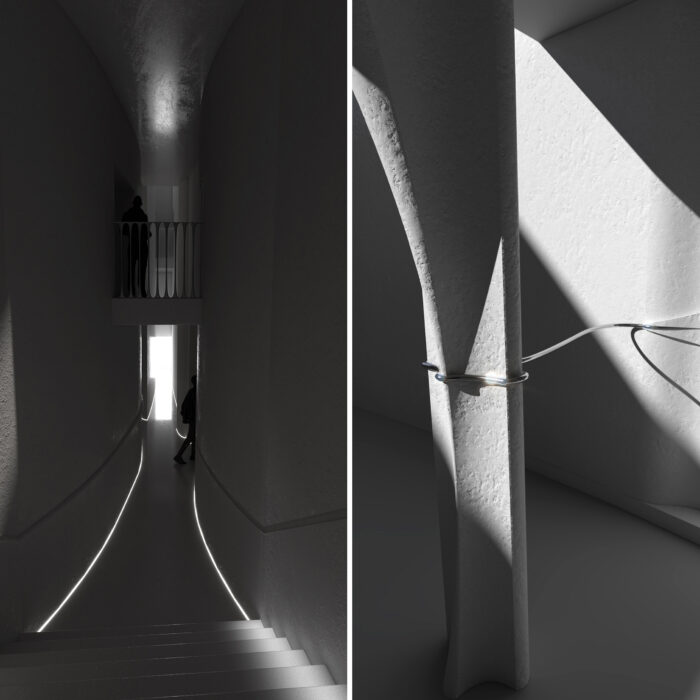
IVY ARIS 2020-21 YEAR 3
IVY ARIS 2020-21 YEAR 3 Where’s North from Here? First Class Honours The processes of papermaking, printing, and archiving are brought together in this new home for Westbourne’s society of self-publishers. Led by the collaborative principles of the ‘zine’ and constructed entirely from paper, the […]
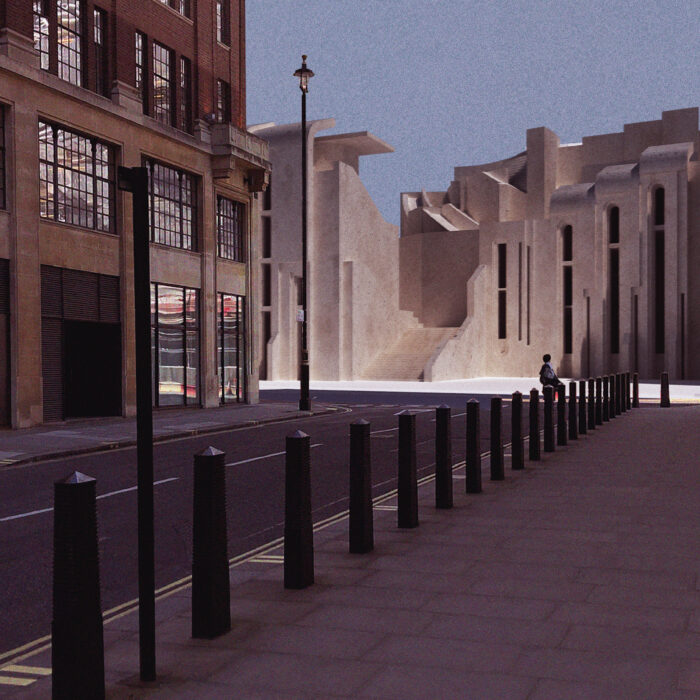
CHELSEA DACOCO2020-21 YEAR 3
CHELSEA DACOCO 2020-21 YEAR 3 Can You See Me Now? The Westminster Guild of Filmmakers investigates the authenticity of what is seen. Drawing on research into the mechanics of the human eye and the filmic production, the building looks to recreate ways of seeing, both […]
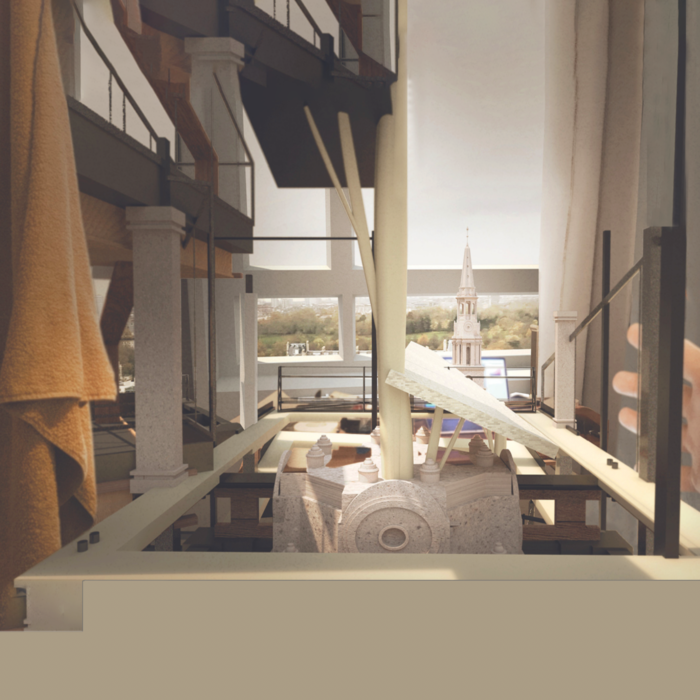
ANDREI DINU 2020-21 YEAR 3
ANDREI DINU 2020-21 YEAR 3 The Westminster Faith Exchange First Class Honours A new headquarters for the multi-faith congregations of the WFE, a council that promotes inter-religious community engagement in London. The building challenges the way we interpret contemporary spaces for worship, acknowledging the distinctions […]
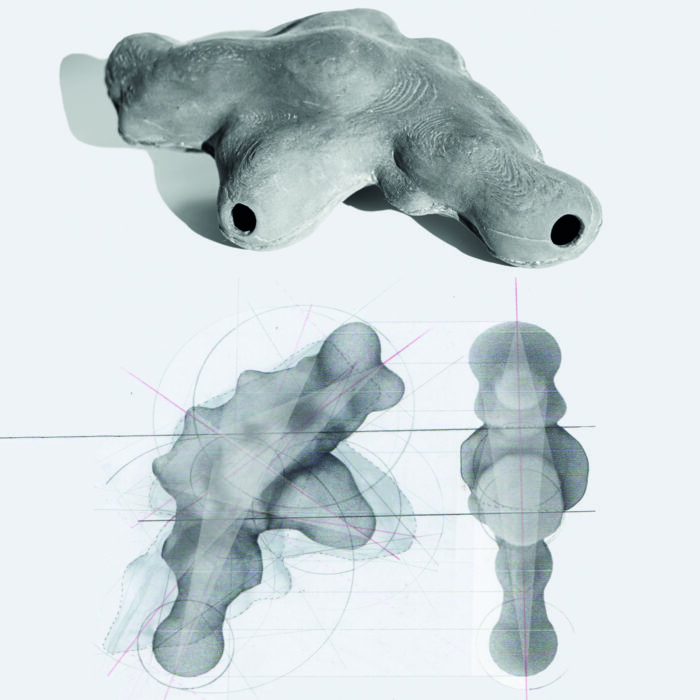
PARIN NAWACHARTKOSIT2020-21 YEAR 3
PARIN NAWACHARTKOSIT 2020-21 YEAR 3 And the Truth will Set You Free First Class Honours A radio station and open-education media centre for the congregation and broadcast of the voices of the community. At the location of the former Royal Doulton clay pipework manufacturing plant, […]
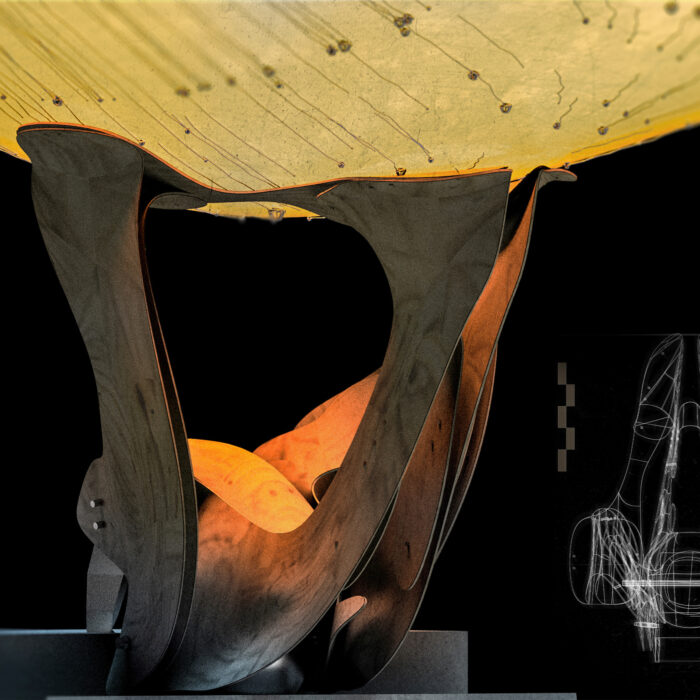
TOM KEELING2020-21 YEAR 3
TOM KEELING 2020-21 YEAR 3 Urban Prosthesis First Class Honours An aquatic filtration facility and leisure centre looks to revive London’s interconnected cultural, fluid, and infrastructural networks. Taking cues from biological processes and metaphors, the project embraces the potentials of a metabolic architecture; a new […]
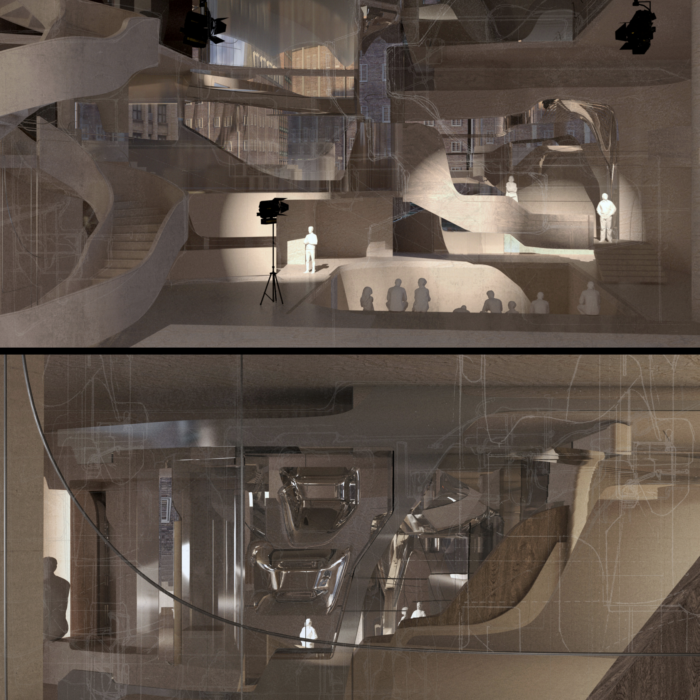
PEIXUAN (OLIVIA) XU2020-21 YEAR 2
PEIXUAN (OLIVIA) XU 2020-21 YEAR 2 Beyond the Visible The Portfolio Prize A cinema and media art centre for visual and acoustic experimentation, welcoming filmmakers, media artists, and the public. An ode to superstitious beliefs, the building explores how cinematic techniques can offer experiences […]
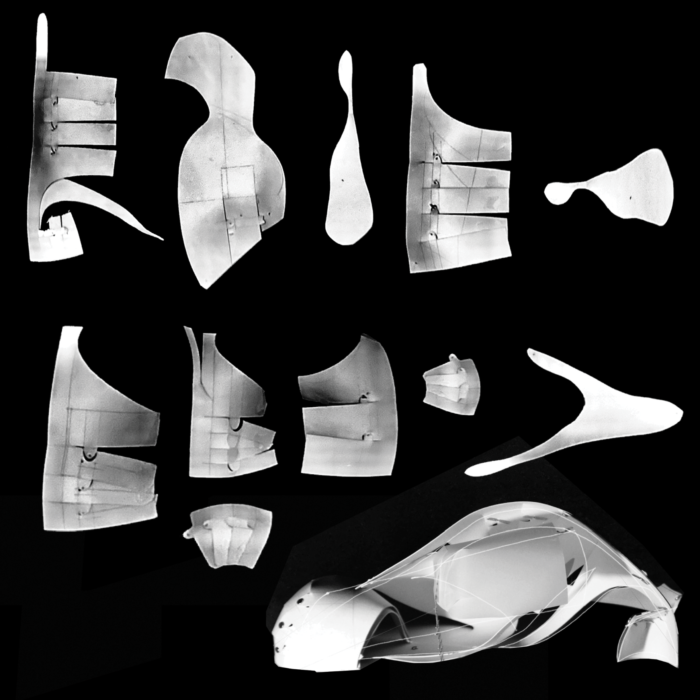
MAX HUBBARD2020-21 YEAR 2
MAX HUBBARD 2020-21 YEAR 2 Red Sauce and Refuge A café complex at the centre of London’s law district offers a last bastion to the demise of the ‘greasy spoon’ and the community that it fostered. Tutors: Greg Storrar, Farlie Reynolds
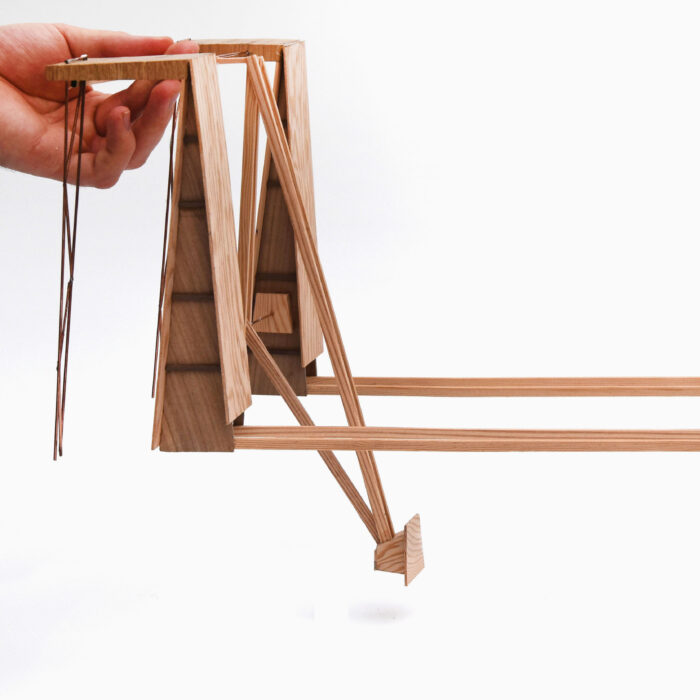
LIBBY STURGEON2020-21 YEAR 2
LIBBY STURGEON 2020-21 YEAR 2 Disrupted Choreographies A riverside community arts centre wedged between two iconic London bridges serves as a testament to the reclamation of public river space and the future pedestrianisation of the city. Tutors: Greg Storrar, Farlie Reynolds
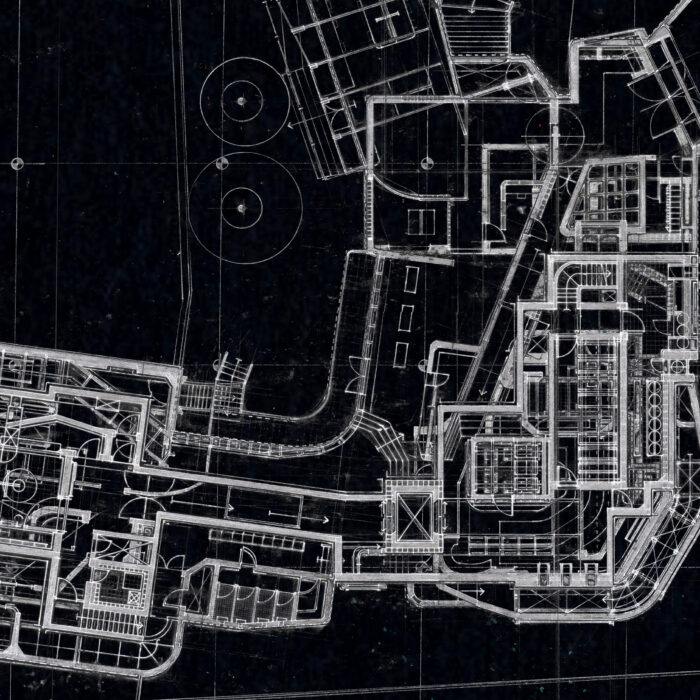
KATE TAYLOR2020-21 YEAR 2
KATE TAYLOR 2020-21 YEAR 2 Tempering the Mundaneum A repository for the lost narratives of musical history, this public-facing archive resists the reclusive nature of the City of Westminster and offers new insights into the handling of musical artefacts. In an age where music can […]
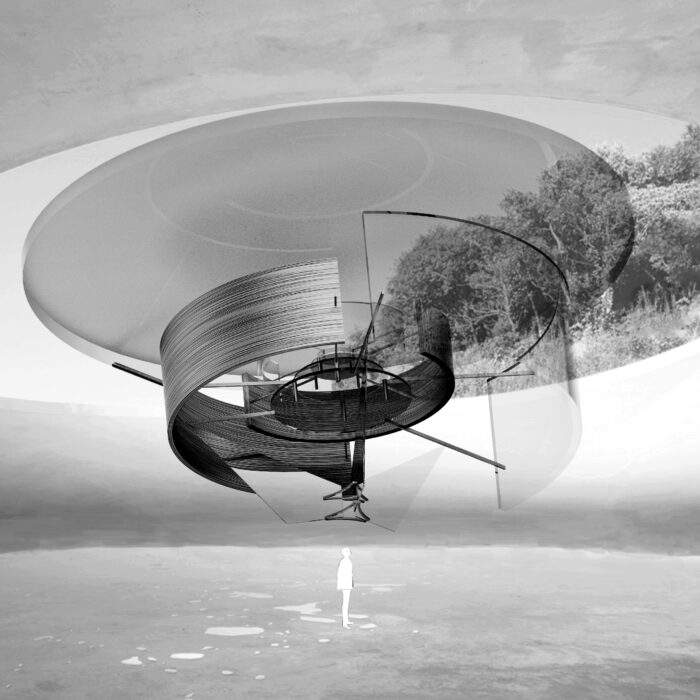
RAFIQ SAWYER2020-21 YEAR 2
RAFIQ SAWYER 2020-21 YEAR 2 Amplifying a Stateless Truth Victims of geopolitical conflict are offered a safe place in the city; food, temporary accommodation, and workspace, in this new embassy for the stateless. Tutors: Greg Storrar, Farlie Reynolds
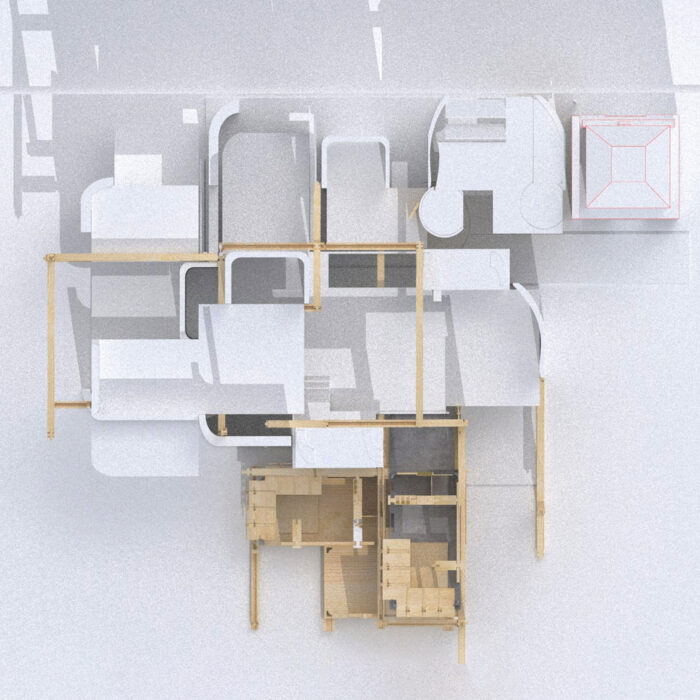
MICHALIS PHILIASTIDIS2020-21 YEAR 2
MICHALIS PHILIASTIDIS 2020-21 YEAR 2 Observations in Residence A thinktank for the research of residential living in London’s Westminster. Projecting forward the history of housing typologies, the adaptable building reconfigures to accommodate residencies in speculative models of urban living. Tutors: Greg Storrar, Farlie Reynolds
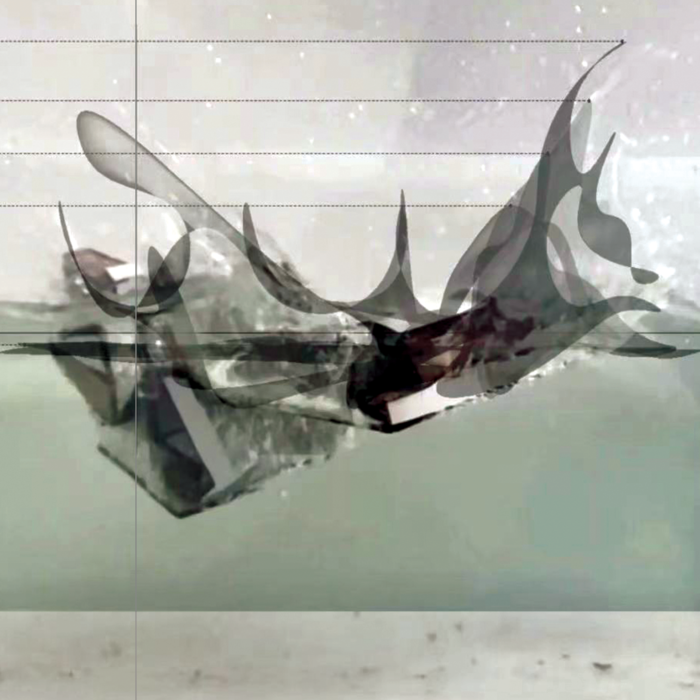
SUNNY SUN2020-21 YEAR 2
SUNNY SUN 2020-21 YEAR 2 Shifting Therapies A facility for Art and Dance therapeutics negotiates the space between bank and river in Westminster, London. Responding to exacerbated post-covid physical and mental health problems in the city, the building creates a new safe space for the […]
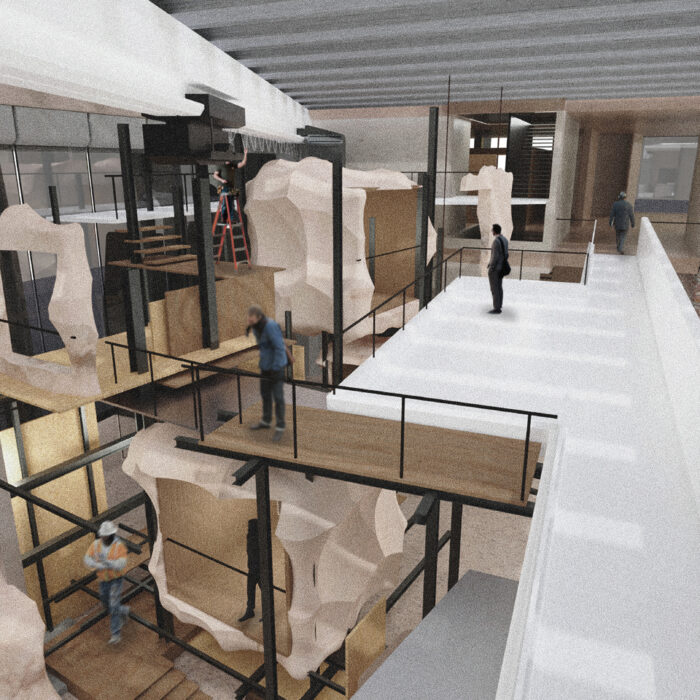
YUTO IKEDA2020-21 YEAR 2
YUTO IKEDA 2020-21 YEAR 2 Institute for Prototypical Housing In this showroom and laboratory for future homes, radical approaches to new construction methods are fabricated, tested, and promoted. Facing off against the Houses of Parliament, the building is a new landmark for London’s changing built […]
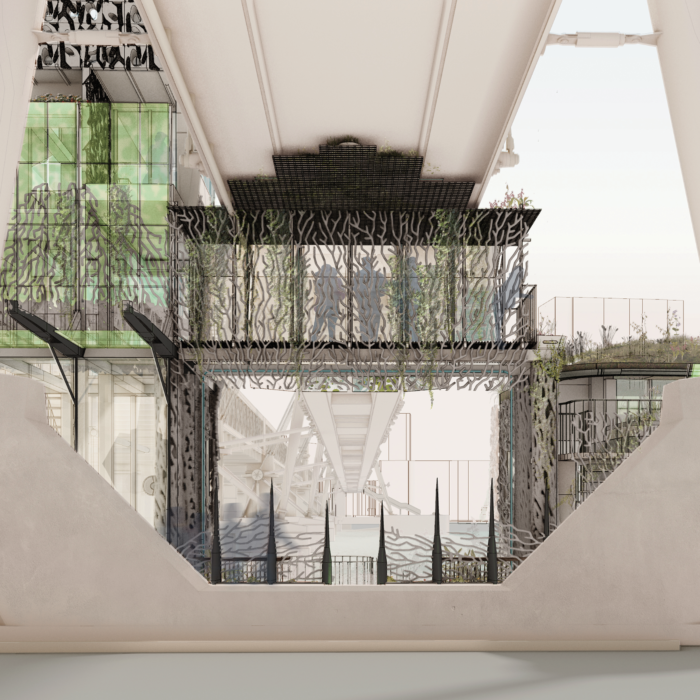
ALICE GUGLIELMI2020-21 YEAR 3
ALICE GUGLIELMI 2020-21 YEAR 3 Thames Habitat Frameworks Nestled on the Victoria Embankment between river, bridge, railway and street, this environmental monitoring station looks to reframe our relationship with the city. Responding to the circadian rhythm of the site, the building shifts with the tide […]
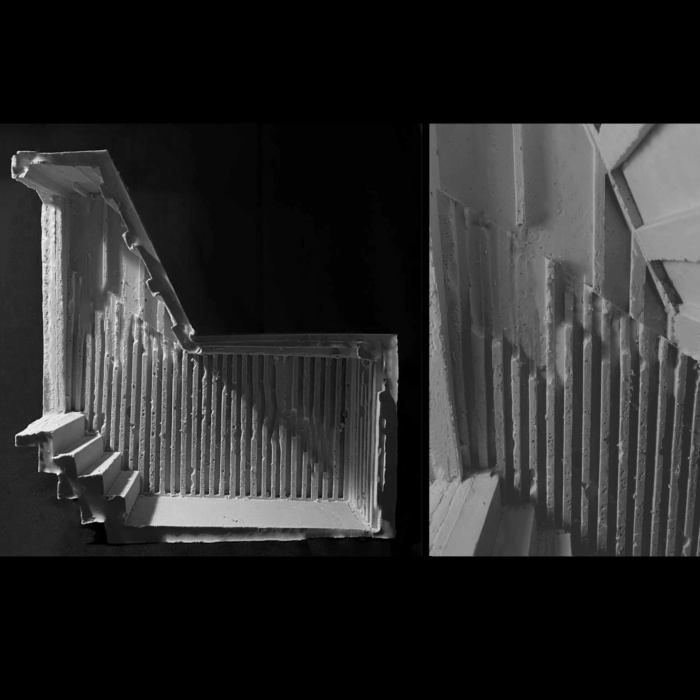
ANNA DIXON2020-21 YEAR 2
ANNA DIXON 2020-21 YEAR 2 The Lost Living Museum Public collection displays and an archival research centre form this new home for the disputed artefacts of London’s alternative histories; the beginnings of a new cultural quarter in the City of Westminster. Tutors: Greg Storrar, Farlie […]
